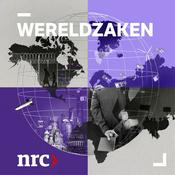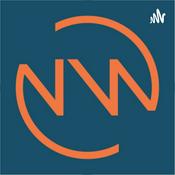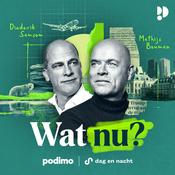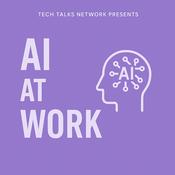2253 afleveringen

3539: ShelterZoom CEO on Keeping Care Moving When Systems Go Down
02-1-2026 | 23 Min.
What happens to patient care when hospital systems suddenly go dark and clinicians are forced back to pen and paper in the middle of a crisis? In this episode of the Tech Talks Daily Podcast, I speak with Chao Cheng-Shorland, Co-founder and CEO of ShelterZoom, about a problem that many healthcare leaders still underestimate until it is too late. As ransomware attacks, cloud outages, and system failures become more frequent, electronic health record downtime has shifted from a rare incident to a recurring operational risk with real consequences for patient safety, staff wellbeing, and hospital finances. Chao explains why traditional disaster recovery plans fall short in live clinical environments and why returning to paper workflows is no longer viable for modern healthcare teams. We discuss how EHR downtime can stretch from hours into weeks, how reimbursement delays and cash flow pressure compound the damage, and why younger clinicians are often unprepared for manual processes they were never trained to use. The conversation also explores the mindset shift now taking place among CIOs and CISOs, as resilience moves from a compliance checkbox to a survival requirement. At the heart of the discussion is ShelterZoom's SpareTire platform and the thinking behind treating uninterrupted access to clinical data as a baseline rather than a backup. Chao shares how the idea emerged directly from hospital conversations, why an external, always-available system is essential during cyber incidents, and how ShelterZoom's tokenization roots shaped a design focused on security without disruption. We also look at how rising AI adoption is changing the threat landscape and why many healthcare organizations are reordering priorities to secure continuity before rolling out new AI initiatives. As we look toward 2026, this episode offers a grounded view of how healthcare organizations must rethink downtime tolerance, data governance, and operational readiness in a world where digital outages can quickly become clinical emergencies. If downtime is now inevitable rather than hypothetical, what does real resilience look like for hospitals, and are healthcare leaders moving fast enough to protect patients when systems fail? Useful Links Connect with Chao Cheng-Shorland Learn more about ShelterZoom Tech Talks Daily is Sponsored by Denodo

3538: How Storyblok Sees Content Strategy Changing in an AI First Internet
01-1-2026 | 33 Min.
Is your website still the front door to your business, or has AI already quietly changed where customers first meet your brand? In this episode of the Tech Talks Daily Podcast, I sit down with Dominik Angerer, Co-founder and CEO of Storyblok, to unpack how content, search, and discovery are shifting in an AI-first world. As search behavior moves away from blue links toward direct answers inside tools like ChatGPT and Google summaries, Dominik explains why many businesses are seeing traffic decline even while signups and conversions continue to grow. We explore how AI is reshaping the role of content management systems, from automation and orchestration to personalization at scale. Dominik shares why consistency now matters more than volume, how outdated content can actively harm brand visibility inside AI answers, and why the technical foundations built for SEO still play a major role as generative search takes hold. This conversation also dives into headless CMS architecture, why separating content from presentation has become even more valuable, and how structured, well maintained content gives AI systems something reliable to work with. Dominik also introduces the idea of joyful content, a belief that better tools lead to better work and ultimately better experiences for audiences. From AI-powered support workflows to personalized retail and loyalty experiences, he shares real examples of how forward-looking teams are already using content as an active system rather than a static archive. As businesses look toward 2026 and rethink how they show up across websites, apps, agents, and answer engines, this episode offers a grounded look at what needs to change and where to start. As AI becomes the place people go for answers rather than search results, how are you rethinking your content strategy, and what will you do differently after hearing this conversation? Connect with Dominik Angerer Learn more Storyblok Tech Talks Daily is Sponsored by Denodo

3537: Why Aztec Labs is Building the Endgame for Blockchain Privacy
31-12-2025 | 29 Min.
What happens when the push for smarter crypto wallets runs headfirst into the reality that everything on a public blockchain can be seen by anyone? In this episode of Tech Talks Daily, I wanted to take listeners who may not live and breathe Web3 every day and introduce them to a problem that is becoming harder to ignore. As Ethereum evolves and smart accounts unlock new wallet features, the surface area for risk grows at the same time. That is where privacy-first Layer 2 solutions enter the conversation, not as an abstract idea, but as a practical response to very real security and usability concerns. My guest is Joe Andrews, Co-founder and President at Aztec Labs. Joe brings an engineering mindset shaped by years of building consumer-facing applications and deep privacy infrastructure. Together, we unpack why privacy and security can no longer be treated as separate topics, especially as Ethereum rolls out more advanced account features. Joe explains how privacy-first Layer 2 networks act as an added line of defense, reducing exposure to threats that come from fully transparent balances, identities, and transaction histories. We also talk about what Aztec actually is, often described as the Private World Computer, and why that framing matters. Joe shares learnings from Aztec's public testnet launch earlier this year, what surprised the team once thousands of nodes were running in the wild, and how the community has stepped up in ways the company itself could not have planned for. There is also an honest discussion about the UK crypto scene, the missed opportunities, and the quiet resilience of builders who continue to ship despite regulatory uncertainty. As we look ahead, Joe outlines what comes next as Aztec moves closer to enabling private transactions on a decentralized network, and why the next phase is less about theory and more about real people using privacy in everyday interactions. If you are curious about how privacy-first Layer 2 solutions fit into Ethereum's roadmap, or why privacy might be the missing piece that finally makes smart wallets usable at scale, does this conversation change how you think about the future of crypto, and where would you like to see this technology go next? Useful Links Connect with Joe Andrews Learn more about Aztec Labs Tech Talks Daily is Sponsored by Denodo

3536: When AI Knows Us Too Well and What It Means for Human Choice
30-12-2025 | 35 Min.
What happens when the systems designed to make life easier quietly begin shaping how we think, decide, and choose? In this episode of the Tech Talks Daily Podcast, I sit down with Jacob Ward, a journalist who has spent more than two decades examining the unseen effects of technology on human behavior. From reporting roles at NBC News, Al Jazeera, CNN, and PBS, to hosting his own podcast The Rip Current, Jacob has built a career around asking uncomfortable questions about power, persuasion, and the psychology sitting beneath our screens. Our conversation centers on his book The Loop: How A.I Is Creating a World Without Choices and How to Fight Back, written before ChatGPT entered everyday life. Jacob explains why his core concern was never about smarter machines alone, but about what happens when AI systems learn us too well. Drawing on behavioral science, newsroom experience, and recent academic research, he argues that AI can narrow our sense of possibility while convincing us we are gaining freedom. The result is a subtle tension between convenience and control that many listeners will recognize in their own digital lives. We also explore the idea of AI companies behaving like nation states, accumulating talent, influence, and authority without the checks that usually accompany that kind of power. Jacob reflects on the speed of AI deployment, the belief systems driving its biggest champions, and why individual self control is unlikely to be enough. Instead, he makes the case for systemic responses, cultural guardrails, and a renewed focus on protecting human skills that cannot be automated away. There is room for optimism here too. We talk about where AI genuinely helps, from medicine to scientific discovery, and how leaders can hold hope and skepticism at the same time without slipping into hype or fear. From preserving entry level work as a form of apprenticeship to resisting the urge to outsource thinking itself, this episode offers a thoughtful look at what staying human might mean in an age of intelligent machines. Jacob has also appeared on shows like The Joe Rogan Experience, This Week in Tech, and The Don Lemon Show, but this conversation strips things back to fundamentals. How much choice do we really have, and what are we willing to give up for frictionless answers? If AI is quietly closing the loop around our decisions, what does fighting back actually look like for you, and where do you think that line between help and influence should be drawn? Useful Links Connect With Jacob Ward Check out his website and book The Rip Current Podcast Tech Talks Daily is Sponsored by Denodo

3535: HR at a Crossroads: Performance, Culture, and Technology
29-12-2025 | 28 Min.
How is HR changing when AI, economic pressure, and rising employee expectations all collide at once? In this episode of Tech Talks Daily, I'm joined by Simon Noble, CEO of Cezanne HR, to unpack how the role of HR is evolving from a traditional support function into something far more closely tied to business performance. Simon shares why HR is increasingly being judged on outcomes like retention, capability building, and readiness for change, rather than policies, processes, or cost control. Yet despite that shift, many HR leaders still find themselves pulled back into a compliance-first mindset as budgets tighten, skills shortages persist, and new legislation raises the stakes. We explore how AI fits into this picture without stripping the humanity out of HR. Simon is clear that AI should automate administration and free up time, rather than replace human judgment or empathy. Used well, it removes friction from onboarding, compliance, and everyday queries, giving HR the space to focus on culture, leadership, and long-term talent development. Used poorly, it risks adding noise without value. The difference, he argues, comes down to data. Without clean, consolidated data, AI simply cannot deliver meaningful insight, no matter how advanced the technology appears. The conversation also looks inward at Cezanne HR's own growth journey. Simon describes rapid expansion as chaos with better branding, and explains why maintaining culture, trust, and clarity becomes harder, yet more important, as teams scale. From onboarding new employees to ensuring a consistent customer experience, the same principles apply internally as they do for customers using HR technology. We also touch on trust, transparency, and the growing focus on areas like pay transparency, data responsibility, and employee confidence in how their information is handled. As expectations continue to rise, HR's credibility increasingly rests on accuracy, fairness, and the ability to turn insight into action. As HR steps closer to the center of business strategy, what mindset shift is needed to move from reacting to change toward actively shaping it, and how prepared is your organization to make that leap? Useful Links Connect with Simon Noble Learn more about Cezanne HR Tech Talks Daily is Sponsored by Denodo
Meer Nieuws podcasts
Trending Nieuws -podcasts
Over Tech Talks Daily
Luister naar Tech Talks Daily, NRC Wereldzaken en vele andere podcasts van over de hele wereld met de radio.net-app

Ontvang de gratis radio.net app
- Zenders en podcasts om te bookmarken
- Streamen via Wi-Fi of Bluetooth
- Ondersteunt Carplay & Android Auto
- Veel andere app-functies
Ontvang de gratis radio.net app
- Zenders en podcasts om te bookmarken
- Streamen via Wi-Fi of Bluetooth
- Ondersteunt Carplay & Android Auto
- Veel andere app-functies


Tech Talks Daily
download de app,
luisteren.































